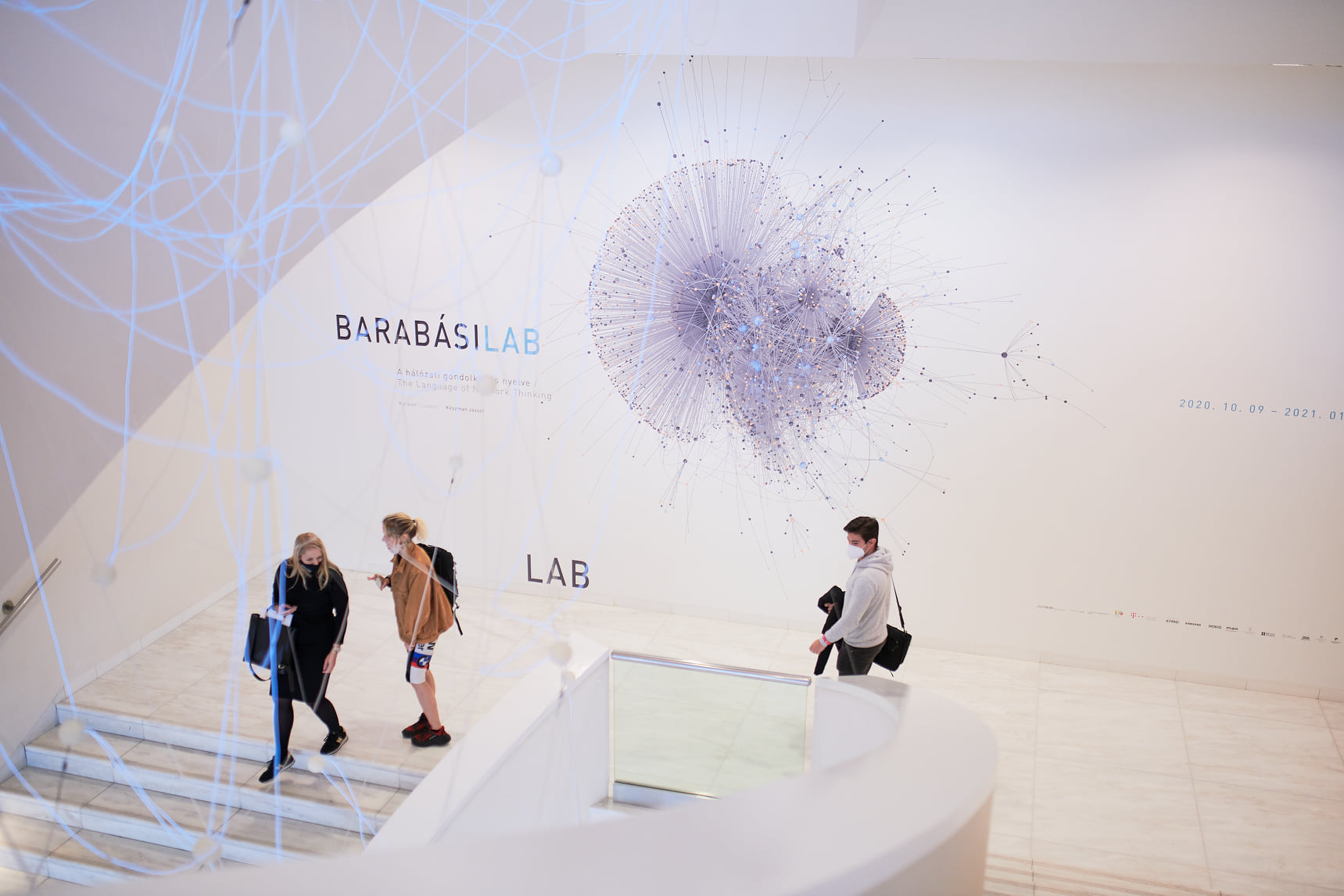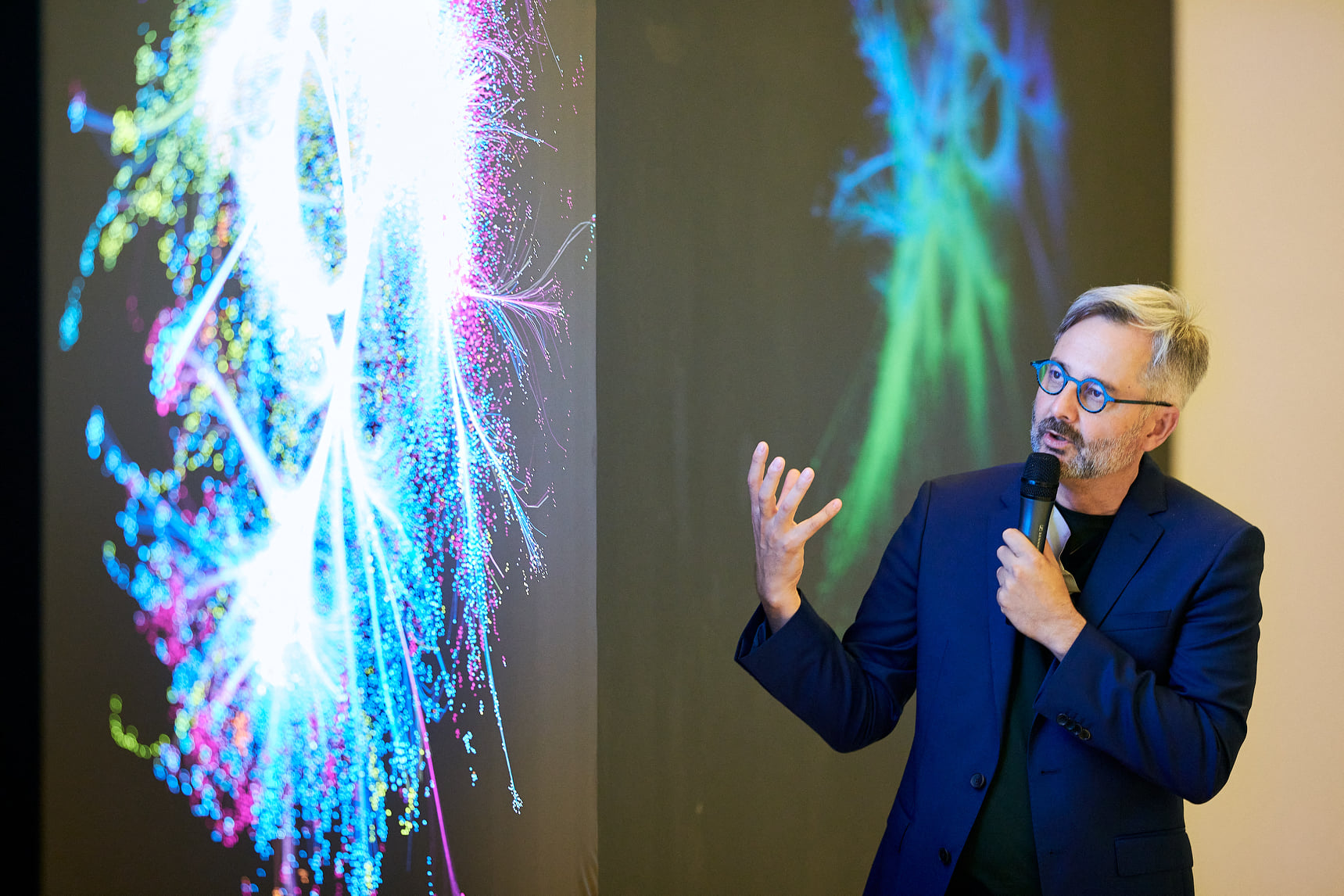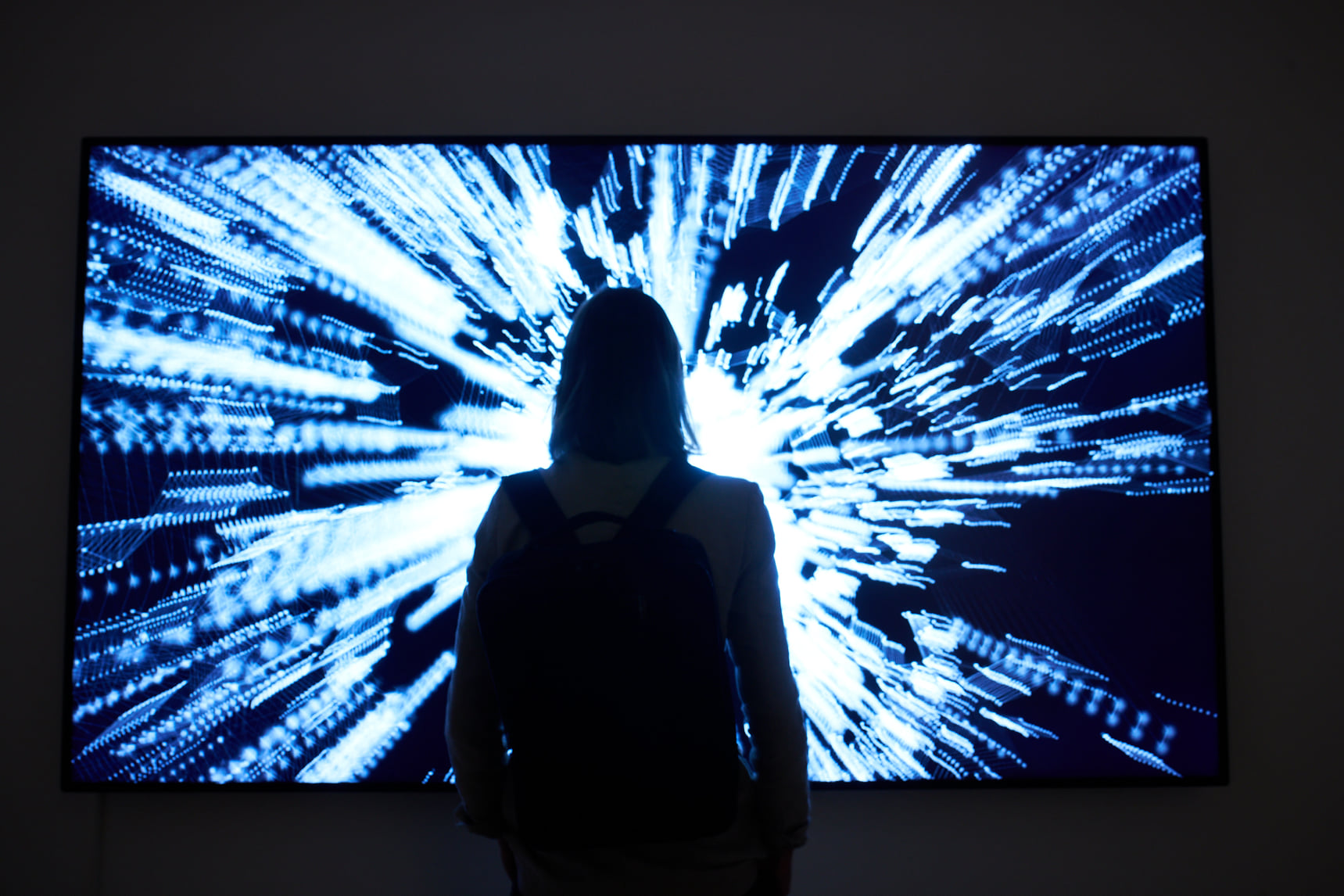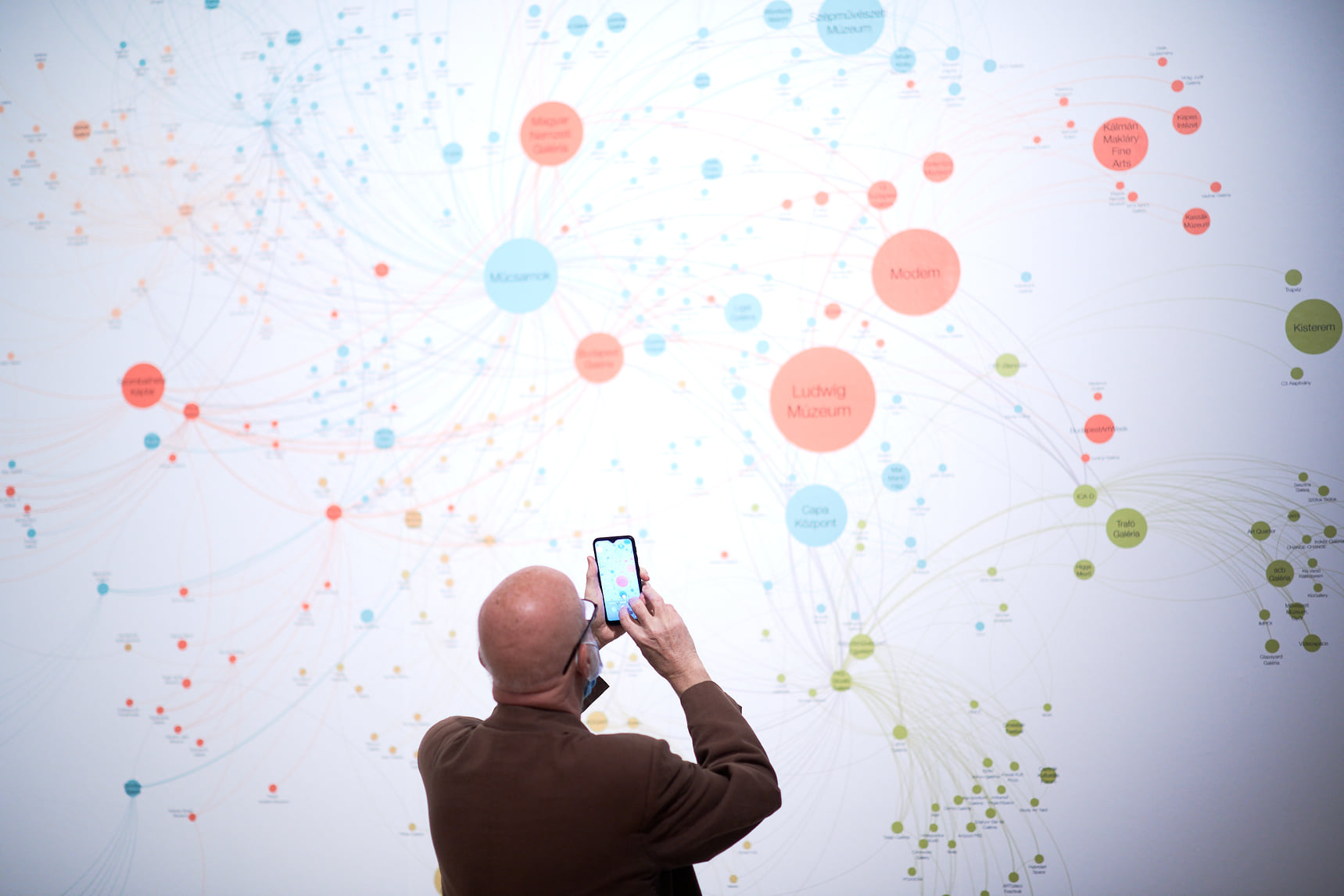Sculpture meets science when physicist Albert-László Barabási makes art from network patterns

As a teenager, Albert-László Barabási wanted to be a sculptor. Then he discovered physics and went on to invent a new field of network science.
But the scientist’s interest in art never went away. Rather, it became integral in Barabási’s research uncovering the patterns in the networks that underpin our world. And that medley of art and science that has yielded a new form of art, now on display in an exhibit in Germany, as well as online.
“In art it is very common that you take ideas from science, shapes from science, and concepts from science and put it into the art space,” says Barabási, Robert Gray Dodge professor of network science and a distinguished university professor of physics at Northeastern. “Here it happened inversely. My interest in art and my active engagement with the art community has allowed me to take the forms and the visual representations from the art that I was experiencing and bring it back to scientific visualization.”
Barabási wasn’t trying to make art 25 years ago. But as he began trying to make sense of interconnected data in the lab, he found himself sketching out networks on paper. “I’m a visual thinker,” he says. It didn’t hurt that Barabási was taking art classes on the side for fun at the time.
The resulting visualization, a maze-like grid pattern, was published in the journal Physical Review Letters in 1996. In fact, that image—not a research paper—was Barabási’s first published work on network science. And so began Barabási’s journey to develop a visual language of sorts to illuminate patterns in complex networks of data.



“Most of the stuff that you see in the exhibit … we haven’t really done it for publication. We have done it mostly because it was part of us understanding the system,” says Barabási, director of the Center for Complex Network Research. “What we have been doing really over the last 25 years is challenged by the science and motivated by my interest in art. We ended up systematically developing the language of network visualization.”
Over the years, the language of network visualization has evolved from the original two-dimensional grid-like sketch to become more organic with curved links and then eventually to three-dimensional models both on the computer and printed into sculptures that Barabási and his colleagues could handle. Now, network visualization has also moved into the virtual reality space.
Barabási’s pull to sculpture, specifically, has endured—and it has proved to be scientifically fruitful. When 3-D printing became available to Barabási, the first thing he printed was “The Flavor Network,” which depicts how flavors are shared across various ingredients in our foods. “That was the first time that I saw how revealing is a 3-D printout of a network structure,” he says. “It can bring out aspects that you would never see in a two-dimensional plot.”
In a network visualized in two-dimensions, the links end up crossing each other, which obscures some of the patterns in a network of data and, Barabási says, “On the computer, even if you did a 3-D rendering, we’re still looking at the computer [screen].” So 3-D printing remedied this problem, he says, and it didn’t hurt that “it helped me express my artistic interests to create 3-D sculptures.”




Barabási’s work is on display at The ZKM Karlsruhe museum in Karlsruhe, Germany in collaboration with the Ludwig Museum of Contemporary Art in Budapest, Hungary starting Friday, April 30. If you can’t travel to Germany, you can still explore the exhibit virtually from when it was at the Ludwig Museum. The exhibition, called “BarabásiLab. Hidden Patterns” opens with a guided tour hosted by Barabási himself at noon ET on Friday, which will be livestreamed in English. Immediately following at 1pm ET, Barabási and colleagues will host a live discussion about network thinking. That panel will also be live-streamed in both English and German.
“These exhibits work at two levels. You can simply go in and just enjoy the aesthetics and the beauty of the visualizations,” Barabási says. “But if you’re willing to engage and read what is being represented, then a totally different content opens up for you.”
For media inquiries, please contact media@northeastern.edu.





